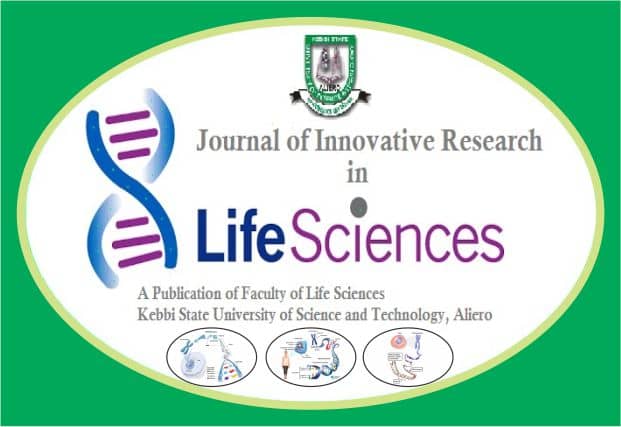
| Research Article | ||||||||||||
JIRLS. 2020; 2(1): 13-20 SEX RATIO AND CONDITION FACTOR OF Synodontis melanopterus (BOULENGER, 1903) IN TONKA RIVER ARGUNGU, KEBBI STATE Ibrahim Shehu Jega, Dalhatu Yahaya Bawa, Abbas Abubakar Usman, Ibrahim Rasaq, Tosin Iriobe.
| ||||||||||||
| How to Cite this Article |
| Pubmed Style Jega IS, Bawa DY, Usman AA, Rasaq I, Iriobe T. SEX RATIO AND CONDITION FACTOR OF Synodontis melanopterus (BOULENGER, 1903) IN TONKA RIVER ARGUNGU, KEBBI STATE. JIRLS. 2020; 2(1): 13-20. Web Style Jega IS, Bawa DY, Usman AA, Rasaq I, Iriobe T. SEX RATIO AND CONDITION FACTOR OF Synodontis melanopterus (BOULENGER, 1903) IN TONKA RIVER ARGUNGU, KEBBI STATE. https://www.jirlsonline.com/?mno=120969 [Access: January 08, 2024]. AMA (American Medical Association) Style Jega IS, Bawa DY, Usman AA, Rasaq I, Iriobe T. SEX RATIO AND CONDITION FACTOR OF Synodontis melanopterus (BOULENGER, 1903) IN TONKA RIVER ARGUNGU, KEBBI STATE. JIRLS. 2020; 2(1): 13-20. Vancouver/ICMJE Style Jega IS, Bawa DY, Usman AA, Rasaq I, Iriobe T. SEX RATIO AND CONDITION FACTOR OF Synodontis melanopterus (BOULENGER, 1903) IN TONKA RIVER ARGUNGU, KEBBI STATE. JIRLS. (2020), [cited January 08, 2024]; 2(1): 13-20. Harvard Style Jega, I. S., Bawa, . D. Y., Usman, . A. A., Rasaq, . I. & Iriobe, . T. (2020) SEX RATIO AND CONDITION FACTOR OF Synodontis melanopterus (BOULENGER, 1903) IN TONKA RIVER ARGUNGU, KEBBI STATE. JIRLS, 2 (1), 13-20. Turabian Style Jega, Ibrahim Shehu, Dalhatu Yahaya Bawa, Abbas Abubakar Usman, Ibrahim Rasaq, and Tosin Iriobe. 2020. SEX RATIO AND CONDITION FACTOR OF Synodontis melanopterus (BOULENGER, 1903) IN TONKA RIVER ARGUNGU, KEBBI STATE. Journal of Innovative Research in Life Sciences, 2 (1), 13-20. Chicago Style Jega, Ibrahim Shehu, Dalhatu Yahaya Bawa, Abbas Abubakar Usman, Ibrahim Rasaq, and Tosin Iriobe. "SEX RATIO AND CONDITION FACTOR OF Synodontis melanopterus (BOULENGER, 1903) IN TONKA RIVER ARGUNGU, KEBBI STATE." Journal of Innovative Research in Life Sciences 2 (2020), 13-20. MLA (The Modern Language Association) Style Jega, Ibrahim Shehu, Dalhatu Yahaya Bawa, Abbas Abubakar Usman, Ibrahim Rasaq, and Tosin Iriobe. "SEX RATIO AND CONDITION FACTOR OF Synodontis melanopterus (BOULENGER, 1903) IN TONKA RIVER ARGUNGU, KEBBI STATE." Journal of Innovative Research in Life Sciences 2.1 (2020), 13-20. Print. APA (American Psychological Association) Style Jega, I. S., Bawa, . D. Y., Usman, . A. A., Rasaq, . I. & Iriobe, . T. (2020) SEX RATIO AND CONDITION FACTOR OF Synodontis melanopterus (BOULENGER, 1903) IN TONKA RIVER ARGUNGU, KEBBI STATE. Journal of Innovative Research in Life Sciences, 2 (1), 13-20. |








